Goodbye to the Drawbridge Inn: Heyday Expansion
June 23, 2014 3 Comments
Part II: Time for Expansion
Throughout the 1970s and 1980s, the complex enjoyed popularity. Its English-inspired Tudor architecture and decor appealed to the theme hungry masses of the day. Its convenience and visibility to the interstate appealed to the now well-trained American traveler. A steady stream of airport travelers helped fill guest rooms. A host of meeting rooms, restaurants, lounges, and a coffee shop, ensured that the complex had activity 24 hours a day.
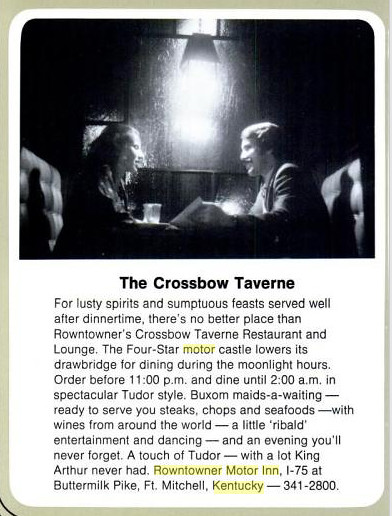
Above: A 1972 ad for The Crossbow. Credit: Cincinnati Magazine
The success meant that the complex had become Northern Kentucky’s de facto convention center finding a market in smaller events. It was time to grow to meet demand.
Above: Side of the Gatehouse Taverne under construction in March 1981.
As America and the Cincinnati region became more inundated with option for dining out and entertainment, The Drawbridge obliged, in part, with the opening of a stand-alone restaurant, Gatehouse Taverne.
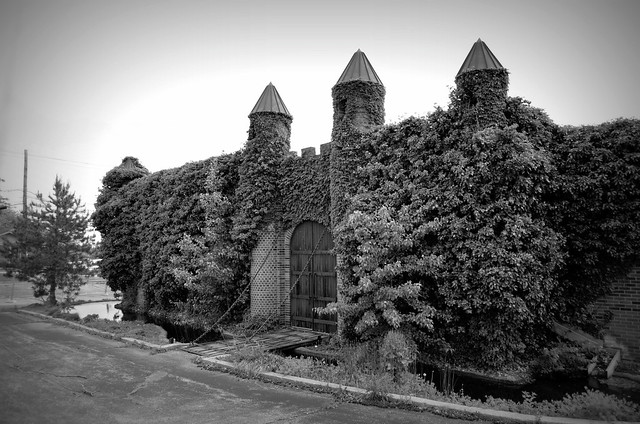 Above: A May 2014 view of the front entrance of the Gatehouse Taverne. Previous photo was taken from the side of the building to the right of this photo. Credit: Travis Nipper
Above: A May 2014 view of the front entrance of the Gatehouse Taverne. Previous photo was taken from the side of the building to the right of this photo. Credit: Travis Nipper
In early 1982, plans began to move forward for expansion of the complex to include additional guests rooms as well as a dinner theater. Plans moved forward in earnest in March when proposals were submitted to Fort Mitchell that included closure of Grace Avenue. Despite opposition, which included an unresolved lawsuit, the work by Wessels Construction and Development Co. went forward during the summer of 1982 rerouting Grace Avenue. The suit would be dismissed in spring 1983 by US Judge William Bertlesman. In December 1982, the project broke ground.
Throughout 1983, the hotel was expanded. In 1984, while the main convention hall space, London Hall, was remodeled, talk of Kroger office space surfaced but never came to fruition.
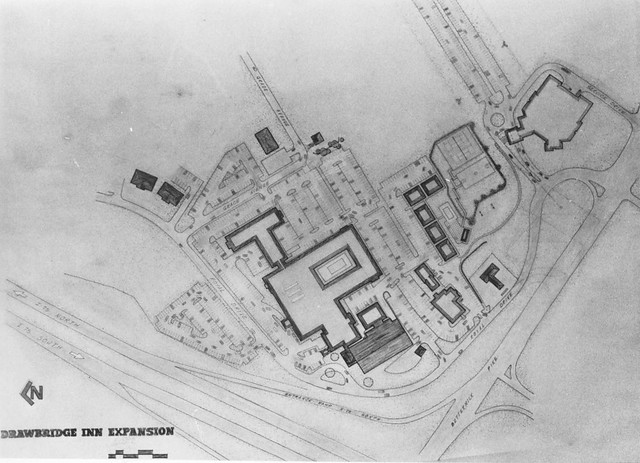 Above: Plans for the expansion of the Drawbridge Motor Inn from 1982.
Above: Plans for the expansion of the Drawbridge Motor Inn from 1982.
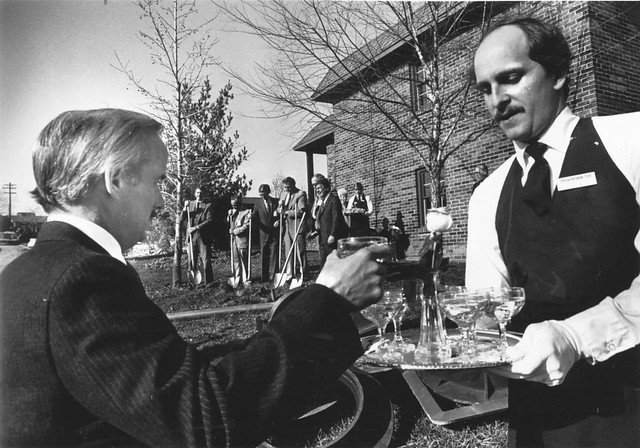
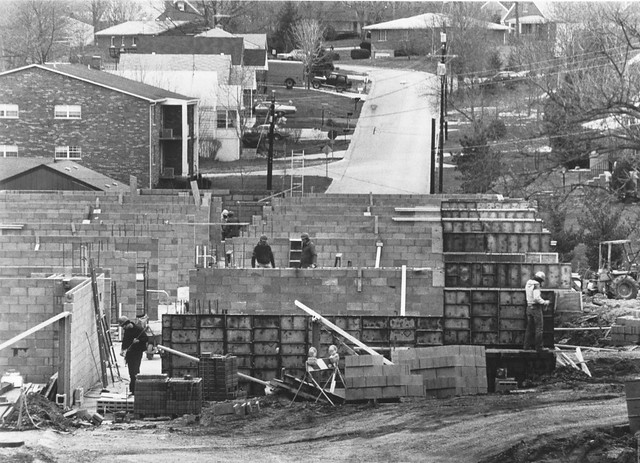 Above: Construction of the new wing of rooms with Grace Avenue in the background in March 1983.
Above: Construction of the new wing of rooms with Grace Avenue in the background in March 1983.
 Above: Construction of the new wing of rooms March 1983.
Above: Construction of the new wing of rooms March 1983.
 Above: Looking north in September 1984. Here you can see the complex after the expansion was completed. It is the two-story structure at center-right of the photo.
Above: Looking north in September 1984. Here you can see the complex after the expansion was completed. It is the two-story structure at center-right of the photo.
Oldenberg Brewery and Entertainment Complex
In January 1984, public discussion began related to a “small brewery”. This was a hybrid of the previous dinner theater concept and represented visionary planning (at least for Greater Cincinnati) on Jerry Deters’ part. In the 5 years since president Jimmy Carter had deregulated home brewing no one had tried the microbrewery concept in the region. The complex was planned to host a microbrewery, an entertainment center, a restaurant, and a festhaus.
By late 1984 the plans were approved and the zoning changed to accommodate the new complex. By early 1985 planners had endorsed the final plans. By late spring the city had approved the construction bonds and construction began in late 1985. Opening was set for August 1987.

Above: Artist drawing of the Oldenberg Brewery portion of the expansion.
 Above: Construction of the Oldenberg Brewery portion of the expansion in 1986.
Above: Construction of the Oldenberg Brewery portion of the expansion in 1986.
 Above: The completed Oldenberg Brewery & Entertainment Center in 1988.
Above: The completed Oldenberg Brewery & Entertainment Center in 1988.
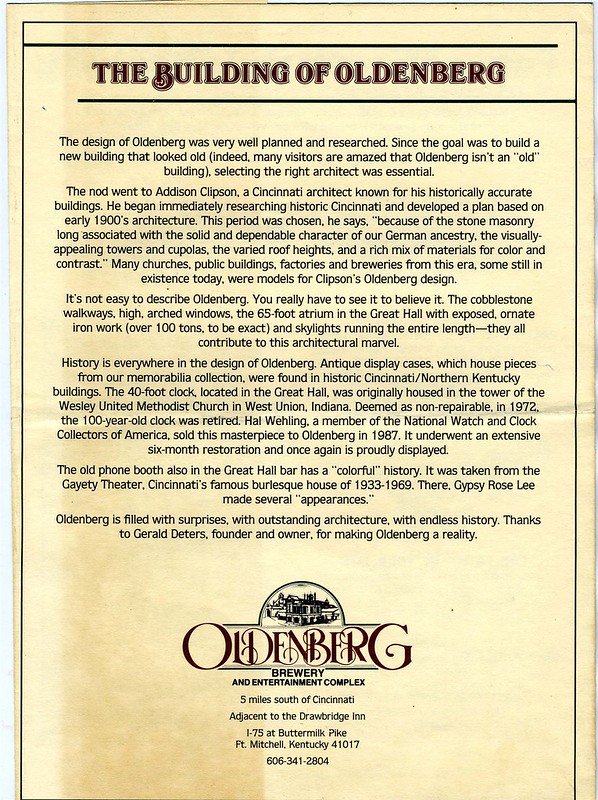
Above: A fantastic story about the design and construction of the building from the menu.
Opened in September of 1987, the Oldenberg Brewery and Entertainment Complex was a successful Northern Kentucky enterprise for over a decade. Contractor Jerry Deters built and founded the sprawling complex which included a fully modernized 12,500 barrel capacity micro-brewery with the aesthetics of a 19th century brewery facility, as well as two restaurants – J.D. Brews and an expansive German dining hall with a ceiling that surpassed 60 feet. The Haydock breweriana collection was on display throughout, and in 1992, the complex became the home of the American Museum of Brewing History and Arts. According to Timothy Hollian, by the early 1990s, Oldenberg Beers had created so much acclaim that the brewery began the self-promotional campaign of “America’s Most Awarded Microbrewery. (Excerpt written by Kevin Grace from Cincinnati Brewing History by Sarah Stephen.)
By 1988, the complex boasted over 500 guest rooms, five restaurants, three pools, and twenty-two meeting rooms. It boasted familiar and enduring names like Josh’s, The Gatehouse Taverne, The Crossbow, London Hall? and others. The hotel made plans for suite improvements and maintained its perennial listing on the largest hotels in the Cincinnati area list. Oldenberg increased production to meet growing demand and talk of expansion to the Louisville market surfaced.
By the close of the 1980s, the Drawbridge complex had essentially completed a decade long expansion. Each concept seemed to resonate with overnight guests, diners, and conventioneers alike. However, public tastes and preferences began to shift and the first cracks of disarray would so begin to show.
Part III: Decline and Demolition
Sources:
Various Articles, The Kentucky Post Tenkotte, Paul A.; Claypool, James C. (2010). Fort Mitchell. In The Encyclopedia of Northern Kentucky. (Vol. F). Covington, KY:The University Press of Kentucky. Cincinnati Brewing History, http://www.queencitychapter.com/brewinghistory/cintibrewinghistorymicros.html Stephens, Sarah (2010). Cincinnati's Brewing History. Charleston, SC; Chicago, IL; Portsmouth, NH; San Francisco, CA: Arcadia Publishing. All photographs unless otherwise noted: Kenton County Public Library, http://www.kentonlibrary.org

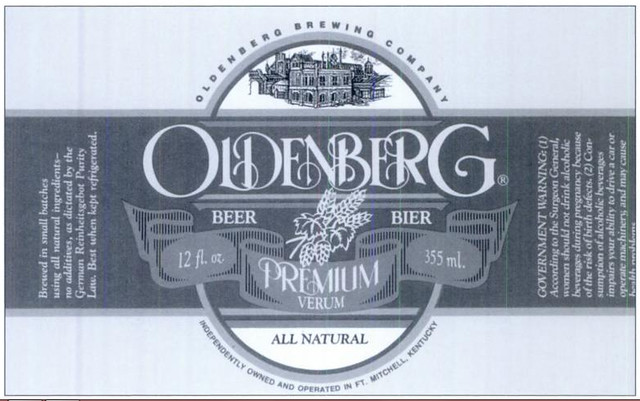
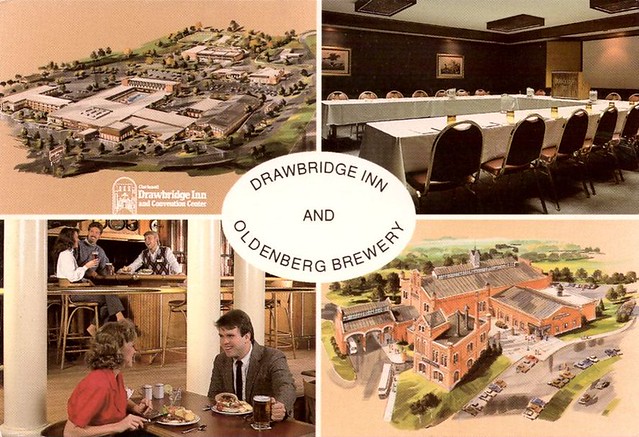




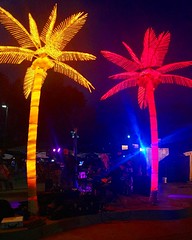
Thank you very much for the excellent post on “Goodbye to the Drawbridge Inn”. The first 2 parts “The Early Days” and “Heyday Expansion”, but part III “Decline and Demolition” does not seem to have a working link. Is this available or does it actually exist? Would love to see! Thanks
LikeLike
Jeff: We will finishing this series soon. Stay tuned.
LikeLike
Did you ever finish part 3?
LikeLike